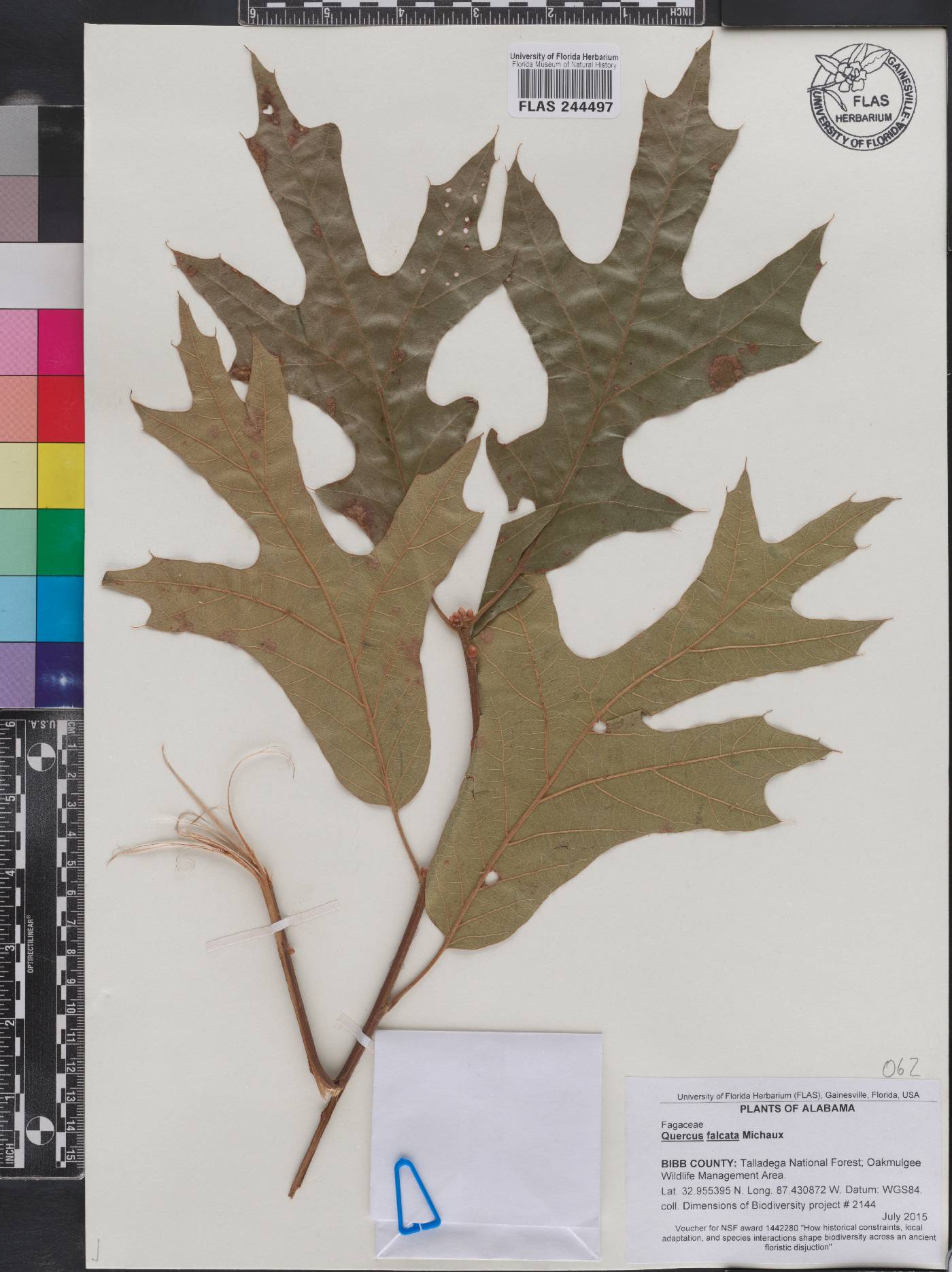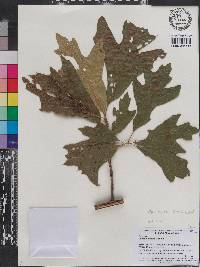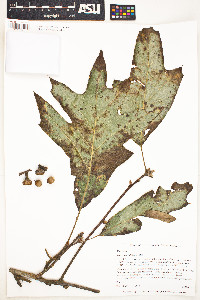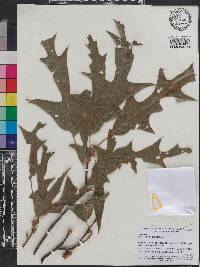|
Family: Fagaceae
southern red oak
[ Quercus falcata var. triloba (Michx.) Nutt., moreQuercus triloba Michx.] |
Trees , deciduous, to 30 m. Bark dark brown to black, narrowly fissured with scaly ridges, inner bark orange. Twigs reddish brown, (1-)1.5-3.5(-4.5) mm diam., pubescent. Terminal buds light reddish brown, ovoid, 4-8 mm, puberulent throughout. Leaves: petiole 20-60 mm, glabrous to sparsely pubescent. Leaf blade ovate to elliptic or obovate, 100-300 × 60-160 mm, base rounded or U-shaped, margins with 3-7 deep lobes and 6-20 awns, terminal lobe often long-acuminate, much longer than lateral lobes, apex acute; surfaces abaxially sparsely to uniformly tawny-pubescent, adaxially glossy and glabrous or puberulent along midrib, secondary veins raised on both surfaces. Acorns biennial; cup saucer-shaped to cup-shaped, 3-7 mm high × 9-18 mm wide, covering 1/3-1/2 nut, outer surface puberulent, inner surface pubescent, scale tips tightly appressed, acute; nut subglobose, 9-16 × 8-15 mm, often striate, puberulent, scar diam. 5-10 mm. Flowering spring. Dry or sandy upland sites; 0-800 m; Ala., Ark., Del., D.C., Fla., Ga., Ill., Ind., Ky., La., Md., Miss., Mo., N.J., N.Y., N.C., Ohio, Okla., Pa., S.C., Tenn., Tex., Va., W.Va. Native Americans used Quercus falcata in various ways to treat indigestion, chronic dysentery, sores, chapped skin, chills and fevers, lost voice, asthma, milky urine, and as an antiseptic, a tonic, and an emetic (D. E. Moerman 1986). Quercus falcata reportedly hybridizes with Q . ilicifolia (= Q . × caesariensis Moldenke), Q . imbricaria , Q . incana , Q . laevis , Q . laurifolia (= Q . × beaumontiana Sargent), and Q . marilandica (E. J. Palmer 1948); with Q . nigra , and Q . pagoda (S. A. Ware 1967; R. J. Jensen 1989); and with Q . phellos , Q . shumardii , Q . hemisphaerica , and Q . velutina . Large tree, to 30 m; bark dark, thick, the rough ridges separated by deep, narrow furrows; twigs of the season persistently pubescent; lvs highly variable, commonly with 1-4 pairs of lateral lobes, these and especially the terminal lobe elongate, 2-5 times as long as wide, the lateral ones rather narrowly triangular and long-tapering, the terminal one more oblong and tending to be somewhat falcate; lvs persistently cinereous-tomentose beneath and on the long (2-5 cm) petiole; acorns 1-1.5 cm, about a third covered by the deeply saucer-shaped cup. Dry or sandy soil in the e., more often in wet soil in the w.; N.J. and sw. Pa. to Fla. and Tex., chiefly on the coastal plain, n. in the interior to O., Ind., and Mo. (Q. rubra, misapplied; Q. triloba)
Gleason, Henry A. & Cronquist, Arthur J. 1991. Manual of vascular plants of northeastern United States and adjacent Canada. lxxv + 910 pp.
©The New York Botanical Garden. All rights reserved. Used by permission. |





